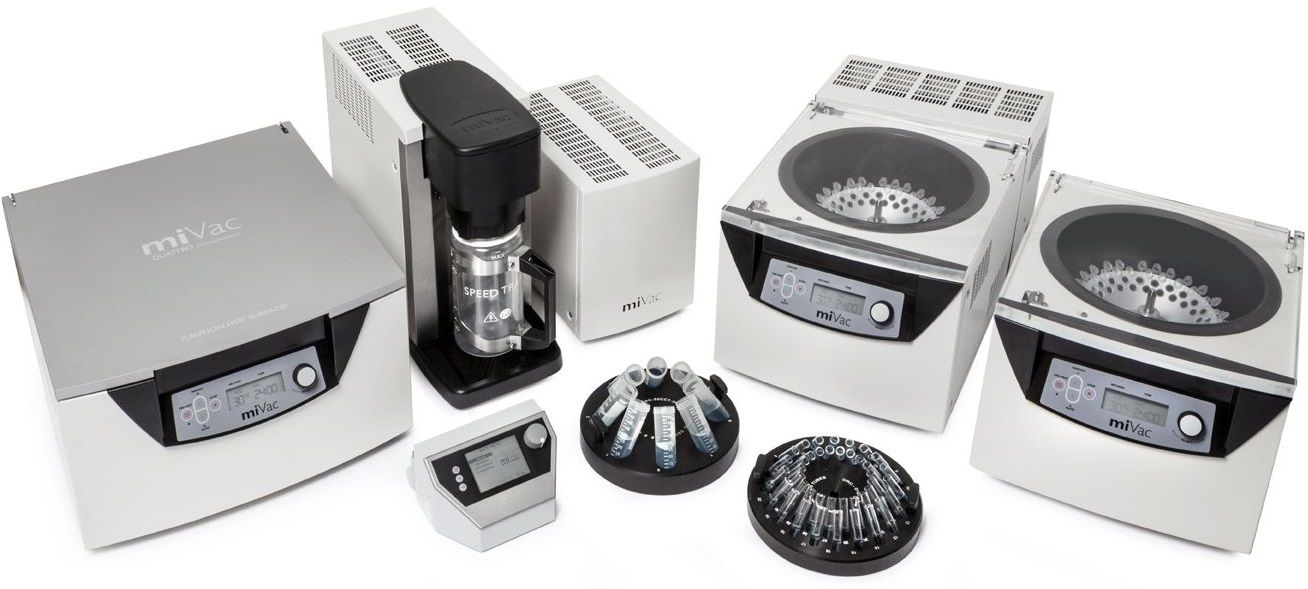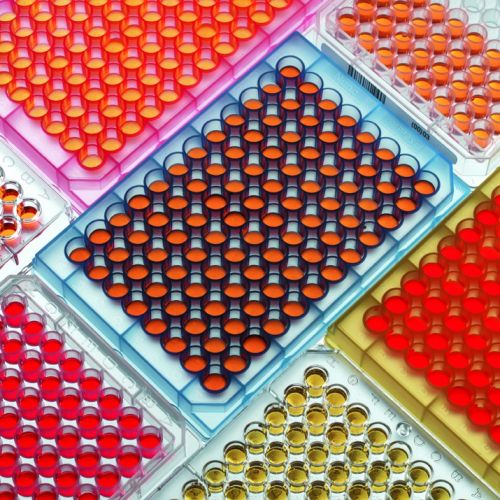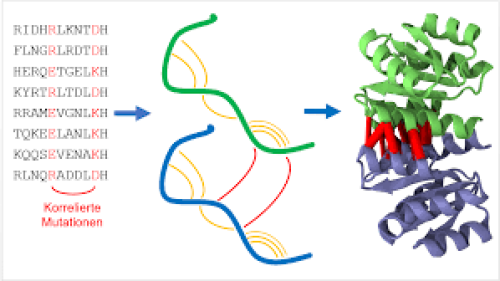miVac Sample Concentrators

Modular range of centrifugal vacuum concentrators
miVac is a modular range of centrifugal vacuum concentrators and freeze driers capable of removing water and organic solvents from a variety of sample formats including tubes, microplates, and vials.
System description
Choose from the Duo Concentrator for low sample numbers or the Quattro Sample Concentrator for larger numbers. Combine with a Duo, Quattro or Scroll vacuum pump depending on the solvents being concentrated and add further options such as the unique SpeedTrap cold trap and vacuum controller.
Unique solid aluminium JetRotors and built-in special methods optimise the concentration of water and water mixtures, improving performance and reducing time.
The miVac SpeedTrap™ may also be used for freeze drying low volumes of water, and can be operated as a stand alone small volume freeze drier, or configured as a combined concentration / freeze drying workstation
- ● Compact modular units
- ● Easy to use
- ● Precise temperature control
- ● Heat & run timers
- ● Novel frost free SpeedTrap
- ● Unique solid aluminium rotors
- ● Fast evaporation
- ● Environmentally friendly
Product Specialist

Mikael Alfredsson
031-709 81 86
Application Examples
Clinical and Diagnostic Testing
Mass Spectrometry (MS) is replacing radio-immunoassay (RIA) in Clinical biochemistry analysis, removing the need to use radioactive reagents. One of the Steroid assays performed by hospital clinical labs is for Vitamin D analysis where there is a need to identify the relative abundance of vitamin D2 and D3. Samples are typically extracted into Hexane, concentrated (e.g. using a miVac) and analysed by MS (avoiding ion suppression problems often seen with RIA).
Clinical and forensic toxicology investigations also utilise MS methodology, typically with solid phase extraction and evaporation as part of the sample preparation process. Blood and urine analysis can be utilised as part of a medico-legal investigation into drug-related deaths and drug-facilitated crimes and in the clinical assessment of alcohol/drug consumption. Hair analysis can also provide evidence over time of drug or alcohol abuse, as part of programme compliance for those participating in drug or alcohol dependency treatment or for workplace or health insurance screening. The EZ-2 has been used to streamline the sample preparation process whilst maintaining sample integrity and improving sensitivity.
Tandem MS is also used to identify metabolic disorders which include aminoacidemias, urea cycle disorders, organic acidurias, and fatty acid oxidation disorders. Samples can be presented as plasma, urine, and blood spots or urine on filter paper. Sample preparation techniques can include solvent extraction, acid derivitisation and evaporation prior to reconstitution in a suitable medium for injection to MS. Evaporation of butanolic HCl used for derivatisation using blowdown techniques results in corrosion of the system especially pins/needles/jets which can lead to contamination of samples and erroneous results. The EZ-2 with HCI resistance commonly used for these sample preparation stages. One example would be the test for CAT (carnitine acyl carnitine translocase deficiency) in neonates, an inborn error of metabolism. Lack of this enzyme prevents the body from converting fats into energy. Labs do the initial test on Guthrie cards (dried blood spots). The cards are punched and extracted with 200ul of Methanol. The supernatant is placed into microtitre plates and dried. Samples are then derivatised using approx 100ul 3N HCl in anhydrous Butanol and dried again. Finally, samples are re-suspended in Water & acetonitrile for analysis by MS.
miVac concentrators have been used by the Australian Sports Drug Testing Laboratory to improve the testing for synthetic insulin analogues in athletes' blood samples. Using the miVac's ability to control conditions during the concentration step the analyst has more confidence that they are seeing the true blood concentration of potential drugs of abuse in the athlete's sample.
Useful Papers:
- Evaluation of the EZ-2 for Forensic Toxicology - Dr Eleanor Miller & Dr Simon Elliott, ROAR Forensics, UK. Evaluated the EZ-2 for use concentrating extracts from hair samples to detect alcohol and drugs of abuse metabolites entrained in the samples
- Evaluation of Evaporative Sample Preparation Techniques for the Extraction of Drugs of Abuse from Urine. Describes the development of a new method for the pre- analytical extraction of drugs of abuse from urine samples pertaining to drug facilitated sexual assault cases. By Forensic Science Ireland (FSI).
- Better Detection of Insulin Analogues - Great care is required when preparing the samples for analysis, this paper evaluates two possible methods (nitrogen blow down & vacuum concentration) and highlights the pitfalls. Study by Australian Sports Drug Testing Laboratory.
Contact us if you are interested in any of the above papers

DNA & Oligonucleotides
DNA Concentration
Concentration of DNA from samples containing water or a mixture of water and alcohols is a simple process, which for most researchers requires the miVac DNA concentrator. Concentration to remove a few hundred microlitres of alcohol from a DNA pellet takes approximately 10 minutes, or less. This is one of the simplest applications of a Genevac system – in a miVac DNA concentrator, set the temperature, select the method for alcohols or water, and press start.
Oligonucleotides & DNA Purification
The manufacture of oligonucleotides commonly has two steps where evaporation is required, evaporation of ammonia solutions following synthesis, and then subsequent evaporation of purified samples. Protection of oligonucleotides from damage during drying is critical, especially where a tag or label has been attached to the DNA. Two studies by Genevac users show that this can safely be achieved in a Genevac evaporator:
- Comparing Evaporators for Drying Oligonucleotides - Catherine McKeen, Eurogentec SA A Rapid,
- Safe Technique for Drying Oligonucleotides - Dr Tim Watts, Wellcome Trust Human Genome Centre
Where samples have been purified by reverse phase HPLC samples are presented in a mixture of water and methanol or acetonitrile. The methods laid out in the Post Purification Sample Handling section should be followed. The imbalance tolerance built into Genevac systems gives researchers confidence that eluates at different ends of the gradient will still dry down, and if there is too much imbalance the system will automatically shut down and tell the user.
Preparation of DNA Microarrays
For certain microarraying techniques concentrated samples of DNA are required. To maintain such a concentration is difficult due to the volatile nature of the buffers holding the DNA, therefore samples should be made up to the required volume immediately prior to analysis. A study by the Wellcome Trust Centre for Human Genetics in Oxford has shown that when an EZ-2 is used in this process the data quality returned by the system is significantly better, reducing the no call rate by 80% or more.

Environmental Analysis
When testing the water quality of a river, a point sample only provides a snap-shot of the situation, where as monitoring over a period of time will help present a better overall picture and can indicate where there is chronic build-up of a potentially harmful substance(s). Samples of tissue are often taken from fish living in the river are examined to determine the nature of any chemicals in the water. Another more recent approach is to use a virtual fish, a semi-permeable membrane device (SPMD) developed by the US Geological Survey. This is placed in the river for a period of time, and then any organic chemicals are extracted with solvent, concentrated and analysed as they would be from a fish.
Air quality can be monitored similarly by filtering air for a period of time, extracting the filter, and then concentrating and analysing whatever organic molecules may be trapped on the filter. This is a key activity in industrial environments where PAHs may be a risk factor for workers.
When concentrating samples the EZ-2 (small volumes) and Rocket (large volumes) are ideal tools for concentrating in the analytical laboratory. Coupled with SampleGenie they enhance analyte recovery, reduce inter-sample variability and free workers to do more productive tasks than monitoring a concentration system. SampleGenie enables large volume samples to be concentrated directly into an autosampler vial, eliminating the need to transfer the sample.
Useful Papers:
Improving Analysis of Airborne PAHs
Detectionand Quantification of Algal Toxins in Surface Water
Analysis of Glyphosate and its degradation Products in Surface Water

Food & Beverage
Genevac systems find application in a number of areas, from testing constituents of beverages such as Cognac or gluten levels in Whisky, to pesticide analysis of fruit and vegetables, antibiotic residues in meats or vitamin levels in cereals. The research and development of Functional Foods where high quality scientific research is carried out also benefits from the speed and quality of a Genevac system. The EZ-2 or Rocket are commonly used, often in conjunction with SampleGenie™, because this delivers automation of sample transfer and gives unparalleled sample recovery and inter-test reproducibility with very low standard deviations, as the studies from the Laboratoire départemental d'analyses de la Drôme clearly establish.
Concentration technology in Genevac systems has been developed with leading analytical laboratories. This, with key technologies like Dri-Pure, ensure that samples are concentrated safely and rapidly. SampleGenie™ is a great aid to concentration because the evaporator only evaporates the solvent contained in the large flask, and not the solvent in the vial. The system detects the end point of evaporation being when the solvent level enters the vial and, once validated, the method will concentrate the sample to the required level. If a precise volume is required in the vial, then the sample must be over concentrated and then made up to the desired level with pure solvent.
For protein analysis, e.g. for nutritional studies, the EZ-2 with HCI resistance option is ideal. Protein digests often require digestion with 6N HCl which is highly corrosive to traditional evaporation systems, however, HCl resistant Genevac systems are designed to withstand daily use of concentrated HCl.
The Rocket has also found an interest application in some of the worlds best restaurants, those that specialise in molecular cuisine, where it is used to concentrate sauces, juices and other natural flavours for the chef to use. Details of how the Rocket is used can be found in a new book; Modernist Cuisine - the Art and Science of Cooking. The Studio Kitchen blog has some interesting receipe ideas, and some of these are also on Kitchen Theory.
Useful Papers:
- An Improved Evaporative Sample Preparation Methodology for Determining Nitrofuran Antibiotic Residues in FoodstuffsKantonales Labor Zurich (KLZH), Zurich, Switzerland
- Analysis for pesticides: Method development to increase the recovery of volatile compounds by using EZ-2, a new generation of centrifugal evaporatorEnvironmental Protection Agency of Tuscany (ARPAT), Florence, Italy
- Evaluation of the EZ-2 for Pesticide Analysis Laboratoire départemental d'analyses de la Drôme, Valence, France
- Evaluation of SampleGenie™ for Environmental AnalysisLeochimica Laboratories, Zoppola, Italy
- Evaluation of the Rocket and SampleGenie for Pesticide AnalysisLaboratoire départemental d'analyses de la Drôme, Valence, France

Proteins & Peptides
One of the most commonly used techniques at all scales is membrane concentration. At the small scale this is usually based on concentrators that fit in a centrifuge or small pressure based filers both of which rely on dead-end filtration to push the supernatant through a membrane and retain the protein. The small scale methods used suffer badly from concentration polarization a phenomenon observed in membrane concentrations where the protein concentration at the membrane increases due to the removal of liquid, this is analogous to the cake formed in conventional filtration. In larger applications a cross flow membrane is commonly used where the pressure potential for filtration is provided by a tangential flow to the membrane surface.This cross flow helps to reduce the effect of concentration polarization by sweeping the membrane to clear the retained protein; however, due to constant solvent removal within the system there is still a polarization gradient setup at steady state. When a protein reaches ultra-high concentration at the membrane interface then gel formation is likely this can reduce the activity of the protein and, if the regime for re-suspension is not effective, lead to loss of yield. When we couple this to the non-specific binding effects of most membrane systems it makes this a technique that the industry is using for necessity rather than optimized performance.
One alternative for laboratory scale concentration is to use Centrifugal Vacuum concentration where the solvent is boiled from the supernatant under vacuum so that the temperature of boiling is below the denaturation threshold of the protein. This can dramatically improve both the yield after concentration and also the activity of the protein.This technique would not be used on the large scale but finds a niche in the small scale laboratory work, for example preparation of sample prior to screening against a panel of precipitants to determine the optimum conditions for crystallisation prior to XRD. For hanging and sitting drop experiments concentrations greater than 10 to 20 mg/ml are often required, this is very difficult to achieve in membrane based concentrators due to the limiting factors that have been highlighted above. Where the sample has been purified using reverse phase chromatography (typically peptides), leaving the sample in water and organic solvent, this cannot be concentrated using a membrane because the organic solvents damage the membrane. In a vacuum concentrator the sample remains in a micro-centrifuge tube and the volume remaining can be accurately determined by the time of concentration. One potential limitation of this technique is that the salt and buffer components of the solution will also be concentrated, hence this is ideally suited to be a polishing step that is used after a capture column or membrane concentration step and therefore allows the sample to reach the very high concentrations needed for crystallization. The most commonly used systems for these applications are the miVac range of biological concentrators or the EZ-2.
Peptide Synthesis
Peptide synthesis is normally performed using solid phase supported stub with the sequential addition of protected amino acids. Between each addition step, the protected terminal needs to be deprotected so that the next acid can react and join. When the desired peptide sequence is complete, it is cleaved from the solid support, usually using a strong acid such as TFA. The peptide in cleavage cocktail is then dried and purified. Following purification the peptide can be fast lyophilised in a Genevac HT series evaporator or dried using a traditional freeze drier.
Useful Papers:
- Better Analysis of Insulin Analogues - Dr Catrin Goebel, Australian Sports Drug Testing Lab Examining the effects of sample preparation on data qualityControlled
- Concentration for MALDI-TOF MS - Steve Knight, GenevacLooking at the effects of sample preparation on MALDI targets in cancer research
